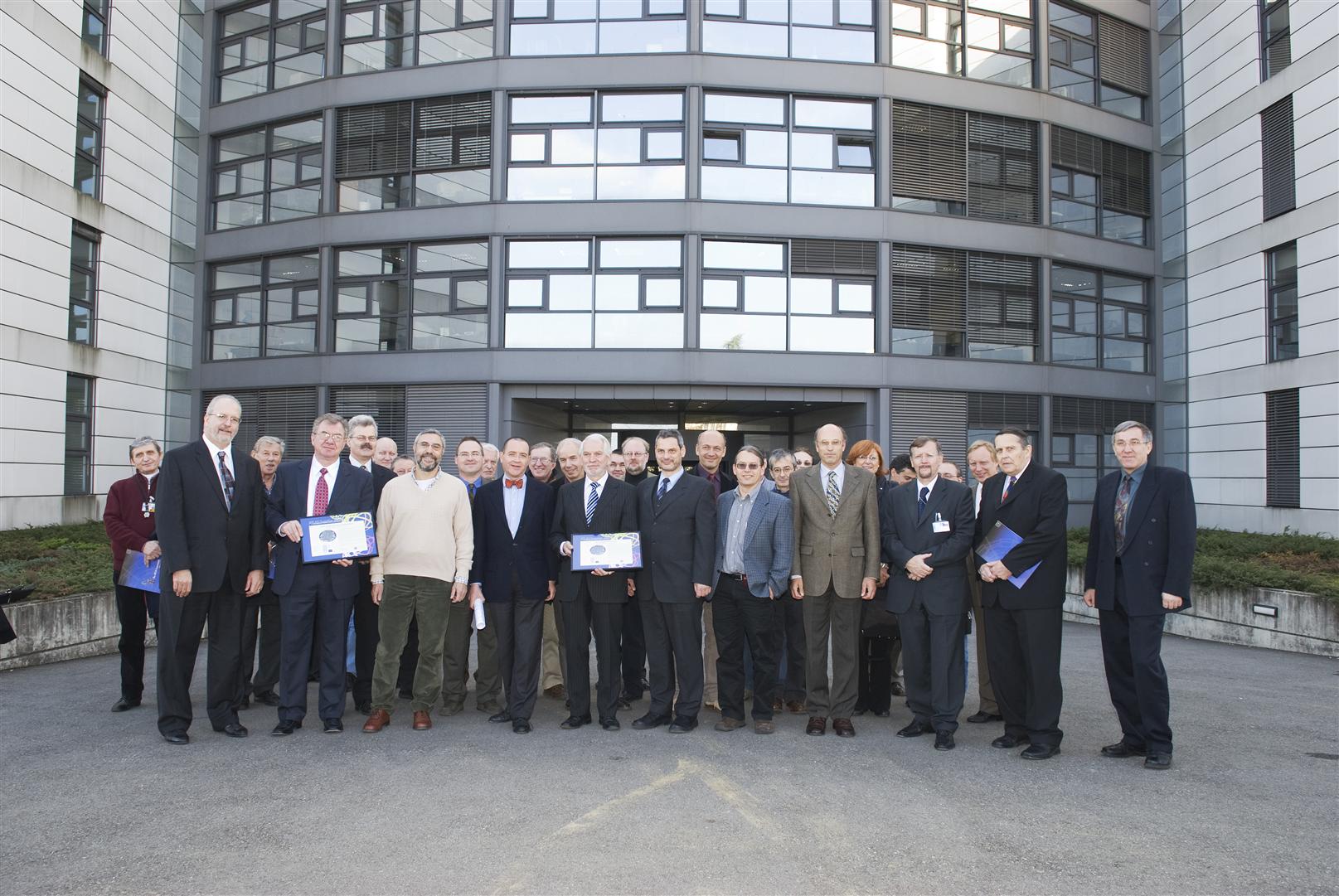Two ATLAS suppliers honoured
The ATLAS experiment has recognised the outstanding contribution of two firms to the pixel detector.
Recipients of the supplier award with Peter Jenni, ATLAS spokesperson, and Maximilian Metzger, CERN Secretary-General.
At a ceremony held at CERN on 28 November, the ATLAS collaboration presented awards to two of its suppliers that had produced sensor wafers for the pixel detector. The CiS Institut für Mikrosensorik of Erfurt in Germany has supplied 655 sensor wafers containing a total of 1652 sensor tiles and the firm ON Semiconductor has supplied 515 sensor wafers (1177 sensor tiles) from its foundry at Roznov in the Czech Republic.
Both firms have successfully met the very demanding requirements.
ATLAS’s huge pixel detector is very complicated, requiring expertise in highly specialised integrated microelectronics and precision mechanics.
Pixel detector project leader Kevin Einsweiler admits that when the project was first proposed 15 years ago he thought it "extraordinarily ambitious". It was equivalent to making an "80 Megapixel digital camera working at 40 million pictures per second", he explained at the ceremony.
These extremely sensitive high-quality sensors are installed in the innermost part of the detector. They will be the closest of all the ATLAS sub-detectors to the collisions and thus among the most exposed to radiation.
Each 10 cm2 tile contains 46,000 active channels. They have been designed to receive and withstand a radiation dose 10 times higher than the levels achieved by existing sensors at the time the design work was started.
Production of the over 2000 tiles has seen yields of 94%, an exceptional achievement given the required characteristics. CERN Secretary General Maximilian Metzger, congratulating the two firms on their excellent work, caught the upbeat mood of the occasion when he said: "The ambitious nature of the project encourages industry to deliver the best. This is co-operation where everybody wins".


